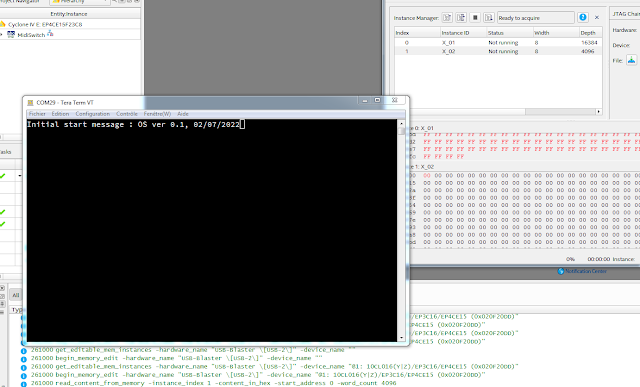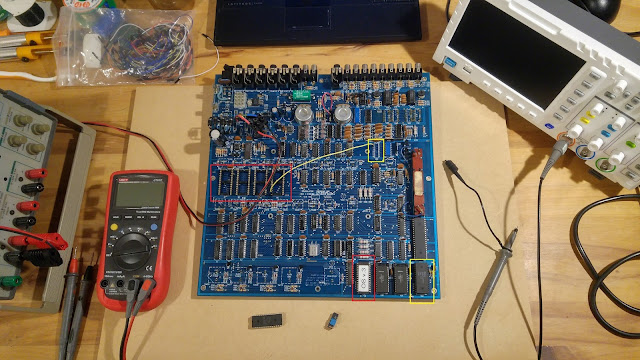There are a lot of digital clocks.
Those made in China which are inexpensive and incapable of any precision.
There are those, a little more serious and more expensive, which are precise but have 2 buttons for 20 functions.
There are also those which are beautiful, with nixie tubes for example, but which are really too expensive.
And then, none is capable of controlling the start or stop of any device.
In 1981, I came across an article in the French review 'Electronique Pratique' about the making of a clock with very interesting characteristics.
 |
| Magazine cover. |
The circuit used was a 4-bit microcontroller of the TMS1000 family, which appeared in 1974. The TMS1121 / 1122 was a version containing a programmable clock application directly programmed into the internal 1024-byte ROM. The result was an extremely practical and easy to use device. I have never found such pleasure in using a simple clock. Unfortunately, I did not keep the copy I made in 1982, thinking that this machine was obsolete and easily replaced by a more ergonomic device: big mistake!
So after a number of years I decided to recreate a equivalent circuit to the TMS1122. Although the original clock was absolutely 'great' for the time, it suffered from two issues. The accuracy of the time was linked to the accuracy of the 50 / 60HZ network. In addition, it did not display the seconds and did not manage them in programming, which could be handicaping for certain uses.The diagram for using the TMS1122 is very simple :
In my new version, there will be just a few additional displays and the time will be taken directly from a specific and very precise component. The operation will be the same except that the seconds will also be managed. In addition, in order to eventually be able to control this clock remotely, the circuit will be equipped with a serial port which will accept exactly the same commands as those typed on the keyboard.
Note that in the past, some people have developed real replacements for TMS1121 here based on a PIC ic :
 |
| http://xyama.sakura.ne.jp/hp/TMS1121_Simulator.html |













